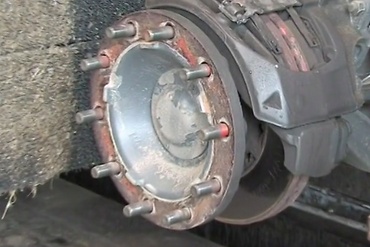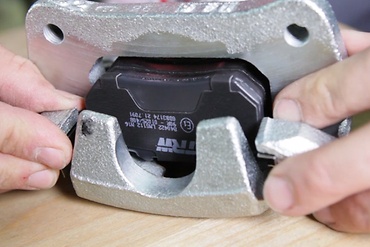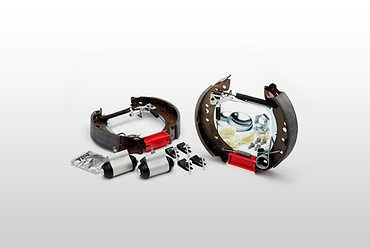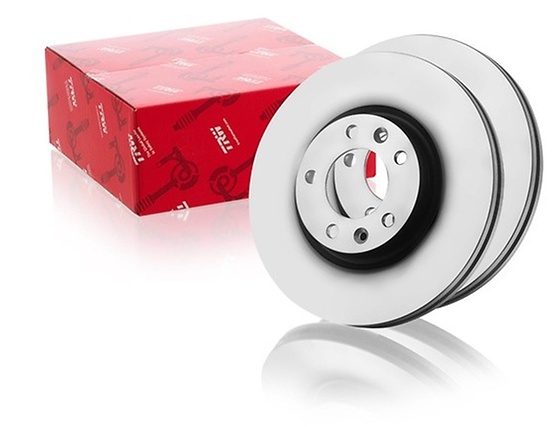
Understanding Different Types of Brake Discs
Braking systems are among the vehicle's most crucial safety features and knowledge of the various brake disc types may help. Altogether, in terms of performance, durability, and safety, there is no better way of getting to know flat, ventilated, slotted, drilled, and combination brake discs.
What Are Brake Discs?
Brake discs, also called rotors are an important part of the disc brake system. Regarding the braking system, when you apply the brakes, the calipers squeeze the brake pads against the disc, and this causes heat as it slows down the vehicle. Brake discs come in all sorts of sizes and are intended to counteract the roads and power jobs.
A flat brake disc is the most elemental type of disc and has a uniform unbroken surface. For those same reasons, it is used in many vehicles because of its basic structure and the amount of money that can be saved. Flat brake discs are good for normal road conditions and practical for day-to-day use because of their simplicity.
Advantages:
- Cost-effective solution for general driving.
- Fewer components make for a durable and low-maintenance option.
- Suitable for a wide range of vehicles with moderate braking demands.
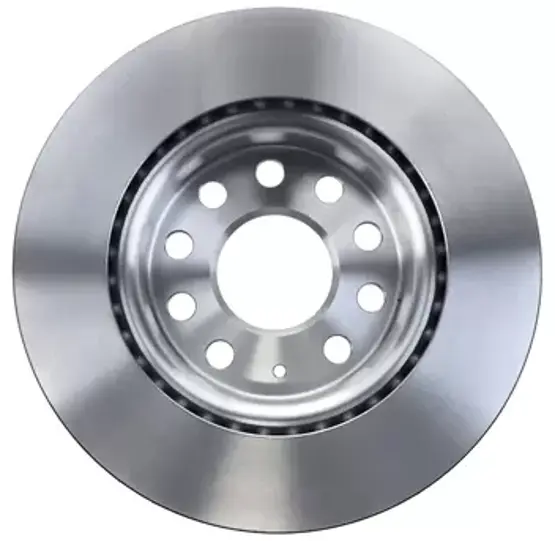
Ventilated brake discs, also known as vented brake discs, are designed with internal vanes that allow air to circulate through the disc, helping to regulate temperature. This design is perfect for high-performance vehicles or driving conditions that involve frequent braking, such as hilly or mountainous terrain.
Advantages:
- Superior heat dissipation prevents overheating, especially during prolonged use.
- Significantly reduces the risk of brake fade in demanding situations.
- Ideal for vehicles that experience heavy braking or high-speed driving.
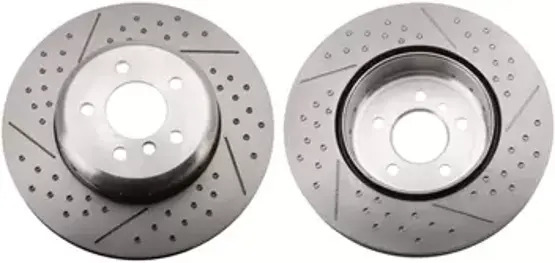
Slotted brake discs are engineered with grooves or slots across the disc surface. These slots serve to improve braking performance by dispersing gas, dirt, and water, making these discs highly effective in adverse weather or off-road conditions.
Advantages:
- Excellent for maintaining optimal braking performance in wet or muddy environments.
- Enhanced heat management compared to traditional flat discs.
- Designed for drivers seeking a performance edge, particularly in challenging conditions.
Drilled brake discs are perforated with holes that help dissipate heat and allow gases and water to escape. They are a top choice for performance brake discs, commonly found in high-performance and sports vehicles where heat management is crucial.
Advantages:
- Exceptional heat dissipation capabilities, ideal for high-performance driving.
- Minimized risk of brake fade during intense braking scenarios.
- Well-suited for drivers who prioritise performance and braking efficiency at higher speeds.
For drivers seeking the best of both worlds, combination brake discs offer the benefits of both slotted and drilled designs. These discs provide unparalleled cooling and performance, making them a top choice for those who demand the highest level of braking reliability.
Advantages:
- Combines the cooling benefits of drilled discs with the debris-removal efficiency of slotted designs.
- Optimal performance in both high-speed and off-road conditions.
- The go-to option for performance enthusiasts who want the highest standard of braking.
Which Type of Brake Disc Is Right for Your Car?
The disc brake system depends on the characteristics of the car like its weight, horsepower, etc. and its usage. For daily use and driving in mild conditions, flat or vented brake discs might be appropriate. For people who require more power in braking, slotted drilled or combination discs are more appropriate in conditions where more force is needed. Some of the aspects that are important to consider are brake disc weight, driving style as well as the needs of the car.
Conclusion
Brake discs also have different designs, and they all have their advantages and disadvantages. From the flat brake discs that are economical to the slotted and drilled that are suited for performance the right one depends on your use. ZF Aftermarket provides a Brake Disc assortment handy for drivers that can provide the best braking quality and safety.
FAQs
Signs include squealing or grinding noises, longer stopping distances, or vibration when braking.
Yes, upgrading is possible, especially if you’re seeking enhanced performance and cooling.
Look for visible grooves or warping on the disc surface and feel for vibrations or pulsations during braking.
Worn brake discs can lead to decreased braking performance, increased stopping distances, and potential damage to other brake components.
ZF Aftermarket product range
Discover the complete portfolio of brakes in our product catalog.
